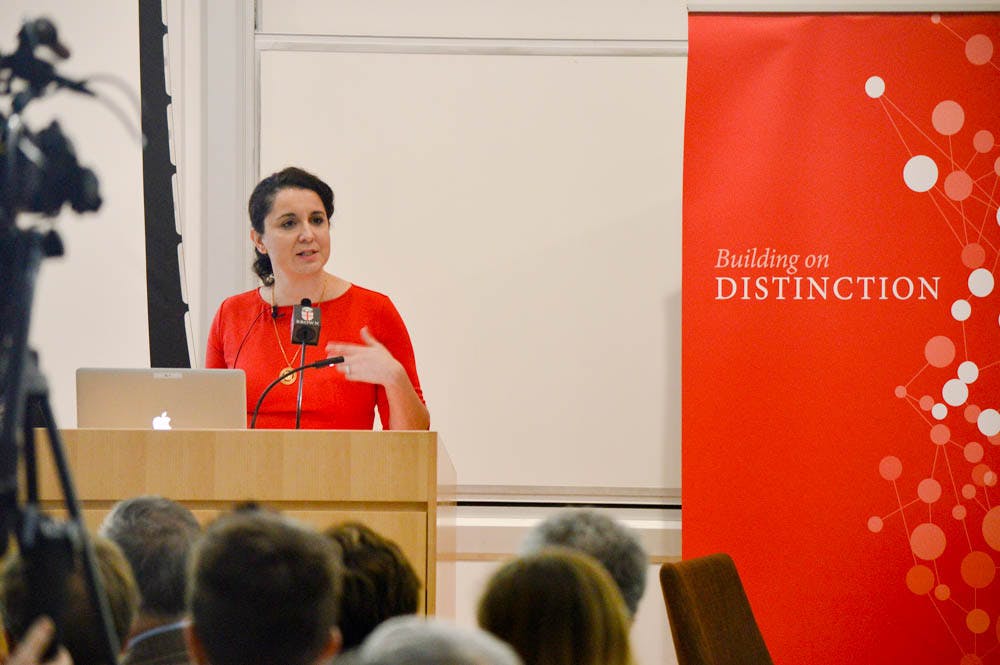On Wednesday evening, three University researchers gathered in the Institute at Brown for Environment and Society to discuss their ongoing multidisciplinary research on “Decoding the Human Brain with Data.” As the next installment of the “Building on Distinction” lecture series, the conversation focused primarily on the intersection of neuroscience and data science. The panel featured Matthew Harrison, associate professor of applied mathematics; Stephanie Jones, associate professor of neuroscience; and Dima Amso, associate professor of cognitive, linguistic and psychological sciences.
Harrison began the event by introducing BrainGate, a joint research program between Brown, Stanford and Case Western University that aims to help those with motor control issues and paralysis. BrainGate places a sensor on patients’ brains to track and record signals while patients attempt to complete tasks such as clicking. As patients perform these actions, their intended movements are paired with the resulting brain signals to create a database of pairs, Harrison said. As the database grows, BrainGate is able to develop a more complete understanding of brain signals and movement.
Delving into a more data-oriented research program, Jones spoke on her work with Human Neocortical Neurosolver, a software that aids clinicians and researchers in testing hypotheses by simulating large-scale neuronal responses. By using data collected from EEG experiments, researchers can compare simulated neural signals to uncover the cellular origins of their data, Jones said. The software can be used to study healthy brain signals and non-invasive brain stimulation, among other applications, she said.
The final presentation of the evening focused on the use of artificial intelligence to better quantify and understand human development. “I study the most rapidly changing machine in the universe, which is the human infant-to-childhood transition,” Amso said. Development during the first three years of life “is incredibly elegant, and it’s very systematic,” she added.
As part of her research, Amso created The Smart Playroom, a space fitted with a number of motion-tracking cameras and filled with toys and objects typically found in a child’s playroom. The researchers track how children interact with objects in the room, paying special attention to how the children move their eyes. This technology allows for a comprehensive analysis of early childhood development to study memory, perception and motor skills at a young age, she said. By studying and analyzing the data encoded from this Smart Playroom, researchers can discover patterns of normal or abnormal development, she said.
In response to an audience member’s question, Amso explained that her work is driven by both discovery and hypotheses. The discovery approach requires researchers to record comprehensive data throughout development, whereas the hypothesis approach focuses on specific age groups and answers specific questions.
Audience members were also curious about how researchers used machine learning in their work. In Harrison’s work with BrainGate, he specified that data collection is supervised by researchers directly. But as computers calibrate the data, the programs and equations create better predictions that grow the aforementioned database. Amso explained that the researchers identify and encode the specific behaviors so they can create novel data sets and track data.
Cornelia Dean, moderator of the discussion and visiting professor of the practice of science, technology and society, said each project combined disciplines to yield great results. “These projects embody the potentially enormous advantages we can derive from true interdisciplinary research,” she said.





